Canoo’s Heart-Wrenching Road to Recovery Leads Him Home
“Canoodle was the opposite of aggressive, he was melancholy, as if he was just a shell with no spirit left in him. I think what drew me in was that I saw a lot of myself in him.”
Canoodle, a five-year-old black pit bull-mix, who is now lovingly referred to as Canoo, had an incredibly rough start to his life. But he found exactly where he was supposed to be when he met his doting adopter, Raymond.
The Beginning
We first met Canoo when he and a group of over 20 dogs were rescued from suspected dogfighting in New York City during the summer of 2021.
“Canoo came to us with a myriad of health concerns. He was in pretty rough shape,” says Nikki Pulone, a Behavioral Specialist at the ASPCA Adoption Center and Canoo’s caseworker. “He had extremely overgrown nails, he was underweight and, probably the most concerning, he had severe dental disease where his canines were worn down to the gumline. He had to have most of his teeth removed.”
Not only was Canoo in rough shape physically, but he was struggling emotionally and behaviorally as well.

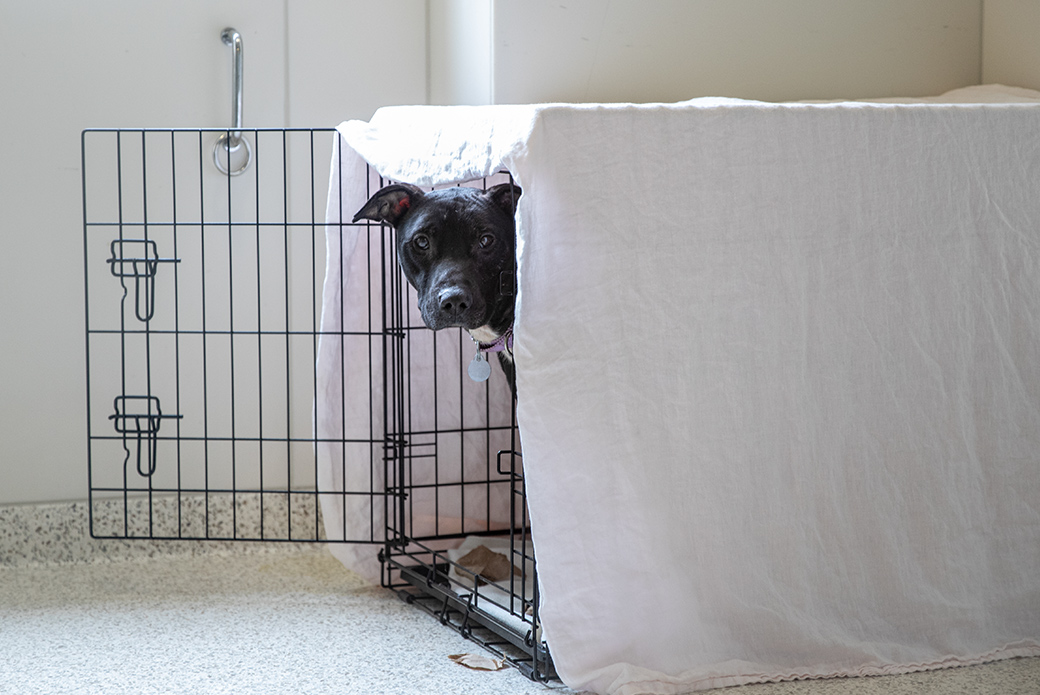
“When he first arrived, he was shut down,” Nikki tells us. “He wasn’t interacting with the environment, his tail was pretty much always tucked underneath him, he didn’t approach people or other dogs and he wasn’t eating very much. He was incredibly stressed.”
Unfortunately, Canoo’s case is all too common with our Behavior team, but this meant that they knew how to help this poor boy. Our incredible Behavior staff got to work and embarked on their three-month-long journey with Canoo, helping him little by little to become his best self.
Learning to be a Pet Dog
Nikki and her team started off by working on relationship and confidence building. The staff would play a game they call “find it,” in which they would scatter treats around the room and try to get Canoo to use his sense of smell to find them. This helped teach him to have more confidence in his environment.
They would also have Canoo interact with them and then give him a treat, building positive associations between interacting with people and feeling safe.

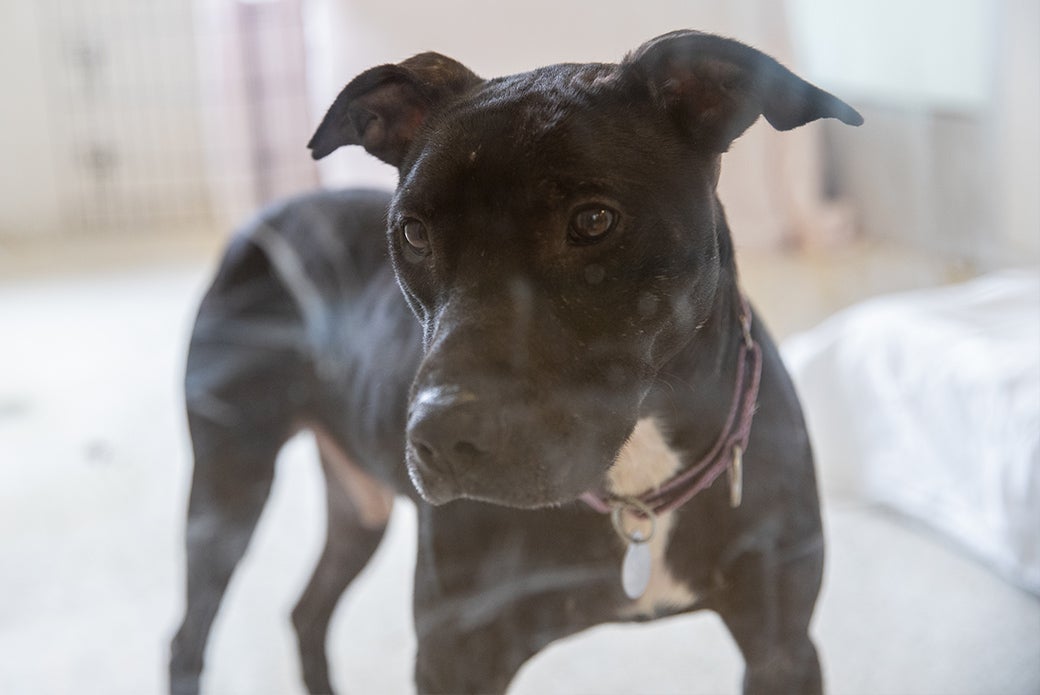
“We’d teach him hand targets, meaning teaching him to touch his little nose to our hand,” explains Nikki. “This is a really great way to create good associations with people’s hands which, potentially up until this point, had likely not brought good things for him.”
As Canoo’s behavior and confidence began to improve, the Behavior team started working on things like leash training.
“He had never been on a leash before, so that was a really big hurdle for him,” says Nikki. “Basically, we had to teach him how to be a pet dog. We would put a collar on him, give him some treats, take it off or put the collar and leash on him, then give just a little bit of pressure, and then give him treats and take it off. It was really just baby steps toward all the things we kind of take for granted with pet dogs.”
Once Nikki and her team were able to get Canoo comfortable on a leash, they began taking him for walks.
Having likely never been on walks before, Canoo was very uncomfortable. He seemed to be very concerned about the environment and didn’t engage with or sniff anything. Instead, he would scan the area with his eyes and pull very strongly on the leash.

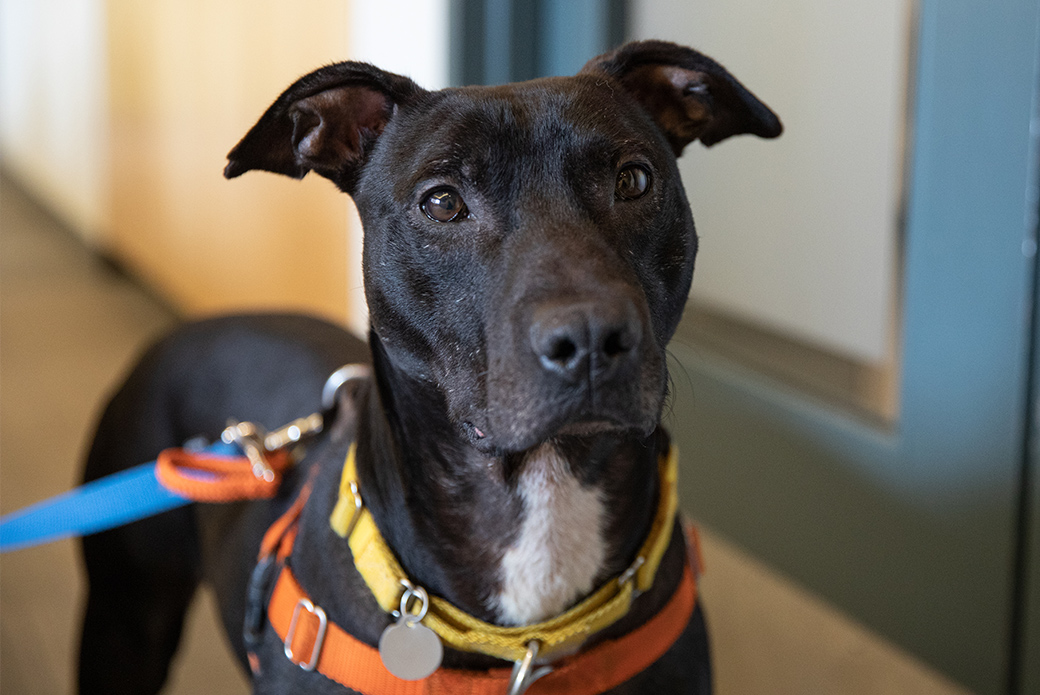
Though he still had some work to do, Canoo was very stressed in the kennel, so the Behavior team felt it was time to try sending Canoo to a foster home.
“When Canoo was in his first foster home, he had a really hard time coping with the home environment,” explains Nikki. “It had nothing to do with the environment, just that he had never been in a home before. He did a lot of barking and had a lot of housetraining issues. He didn’t really understand the concept of using the bathroom outside.”
Due to the amount of stress Canoo was in, he was brought back to the Adoption Center.

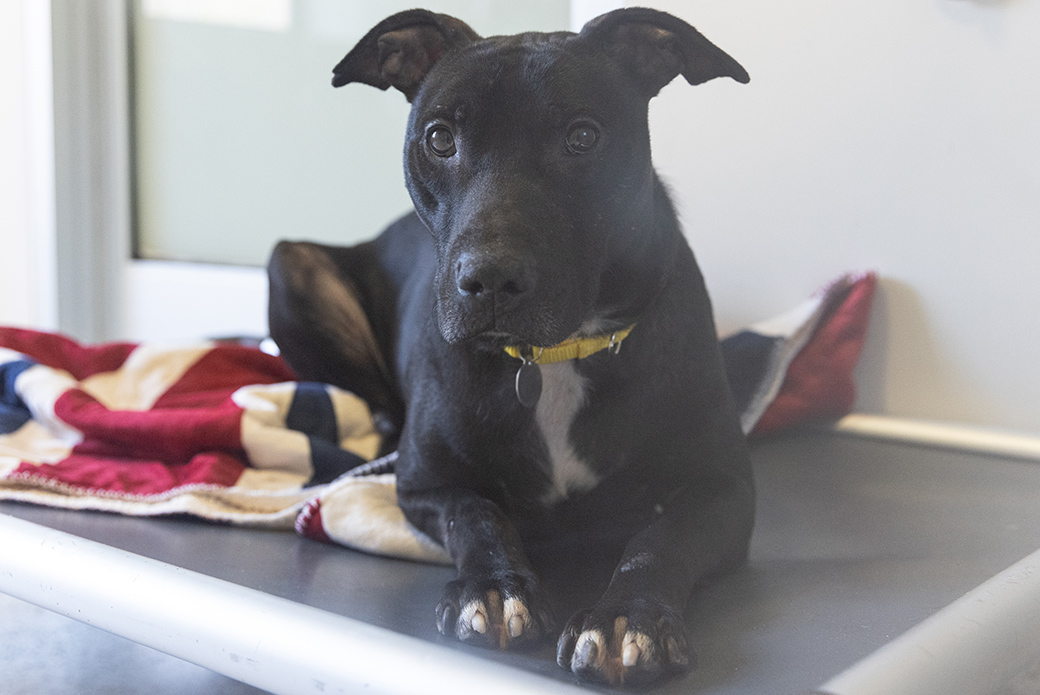
“We knew that if Canoodle was going to be a successful pet, he needed extra support,” says Rachel Maso, Director of Animal Behavior at the ASPCA Adoption Center.
To get this extra support, Canoo was brought to a board and train facility where a behavioral specialist worked with Canoo to help him cope, get through his fears, encourage his sociability, explore his environment and ultimately, to blossom.
Making Strides
After spending three weeks at board and train, Canoo came back to the Adoption Center and showed real progress in his recovery journey.
“We knew Canoo had made significant progress in his behavior at a few different points,” Nikki recalls. “The first of which being the first time he played with a toy. He picked it up in his mouth and I remember just being so proud and so hopeful for his future. The first time he lifted up his tail—before this it had always been in the tucked position—while he was interacting with a person, and he leaned in for pets. It was the first moment of real social connection with a person. We were really inspired to see that he could have that connection with a person, and he could trust again.”

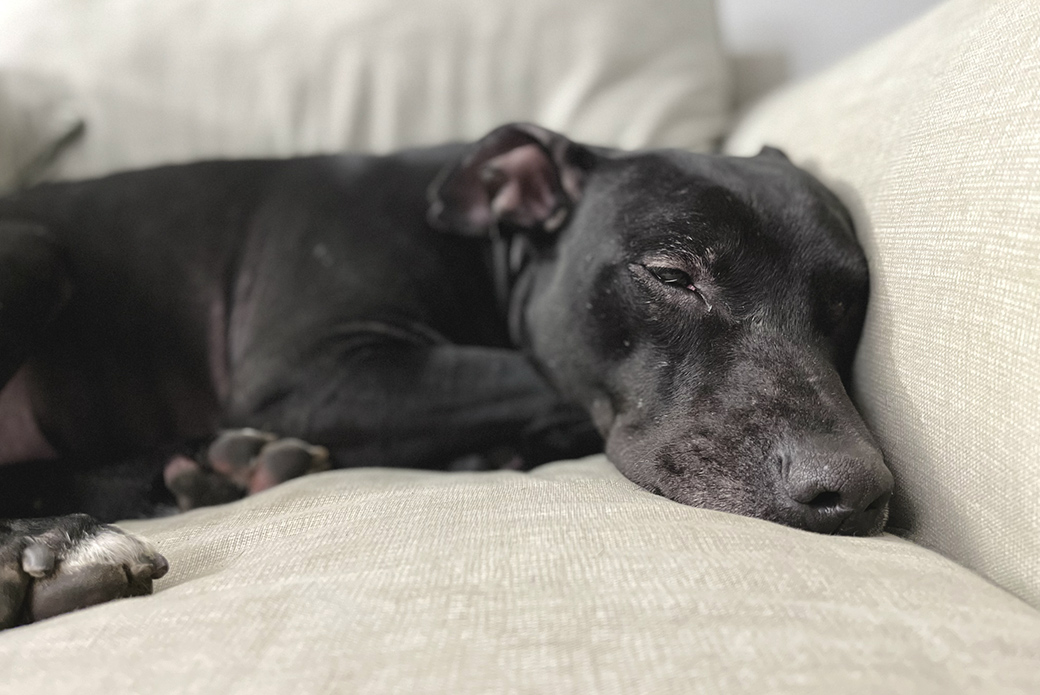
Most of all, it was when Canoo seamlessly transitioned from his board and train facility into a foster home that our Behavior team knew that Canoo was ready to find a home of his own.
“Also, when Canoo cuddled up on the couch with his foster. This isn’t something that he’d ever done before, we’d never seen him seek out spending time close to somebody and touching them and just resting in a comfortable state while so close to people,” Nikki adds. “It was really just an incredible moment in his trust building and sociability that I’ll never forget.”
A Match Made in Heaven
Raymond was scrolling through one of the ASPCA News Alert emails when he came across an “Animal Spotlight” featuring Canoodle. Raymond clicked the link, leading him to Canoo’s profile.

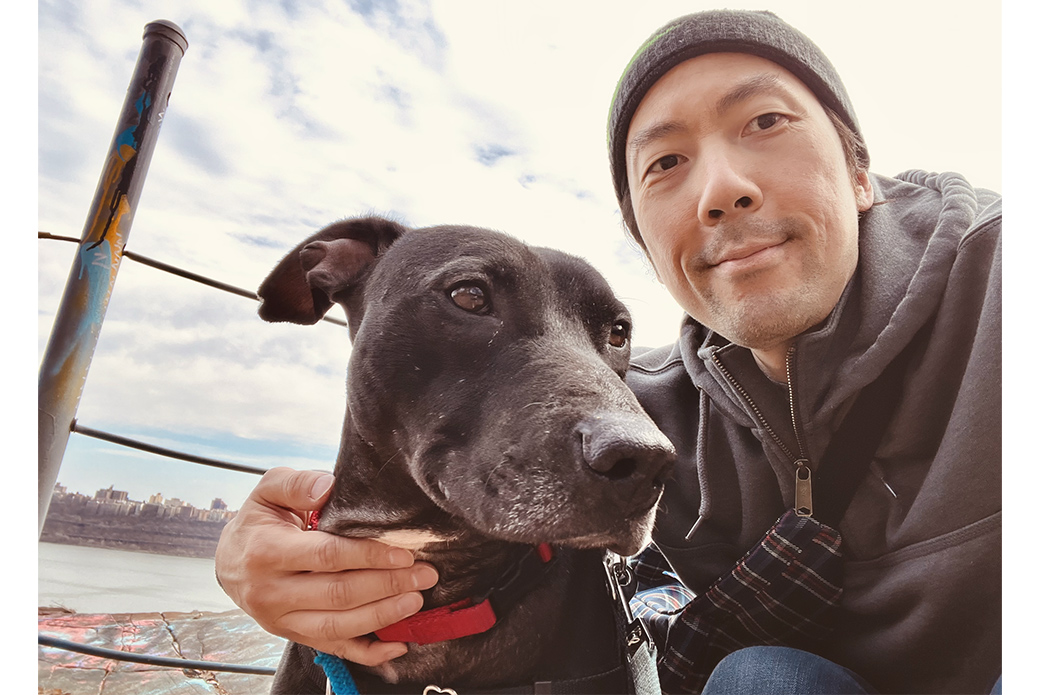
“I knew Canoo was for me when I read his article and watched his video on the website; specifically, about how he’s five-and-a-half (about halfway through life) but never had the opportunity to learn how to be a “real” dog, and prior to being rescued spent most of his life being neglected,” recalls Raymond. “The video showed footage of Canoo not interacting and shying away from other dogs that just wanted to play. Canoo was the opposite of aggressive, he was melancholy, as if he was just a shell with no spirit left in him. I felt incredibly sad for him. I think what drew me in was that I saw a lot of myself in him.”

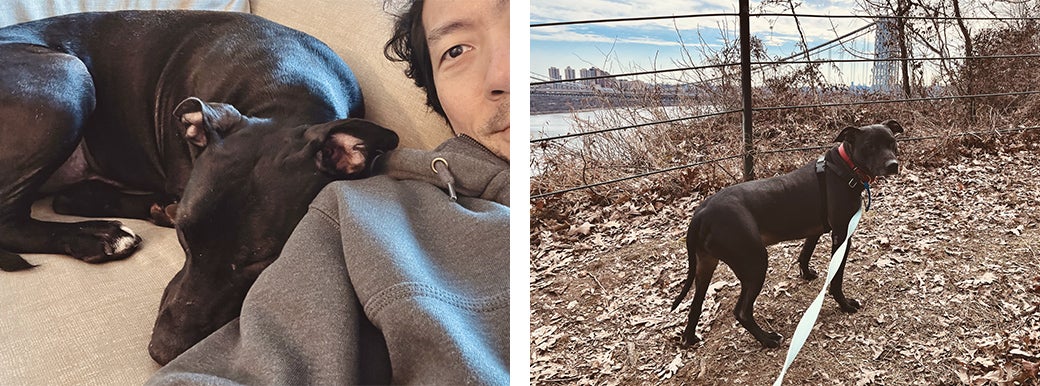
Prior to seeing Canoo’s profile, Raymond had only ever rescued a stray cat before, though he had been considering adopting a dog for about two years. Yet, after seeing countless videos and postings of available dogs, he always found a way to convince himself it wasn’t the right time.
“However, when I stumbled upon Canoodle’s article, it was automatic and instant—without hesitation or second-guessing I applied to adopt him as if my brain was on autopilot,” says Raymond.
He continues, “adopting Canoodle also meant that his foster caregiver and the ASPCA could set their focus on helping other dogs in need. And it meant giving Canoo the opportunity he was previously denied, which is to live happily, peacefully and to be loved.”
Just a week later, Canoo was on his way to his first real home in New Jersey.
A Home to Call His Own
Having only met his new pet parent a few hours prior, Canoo immediately made himself at home, a drastic difference to the Canoo we met months earlier. By the evening, Canoo was already curled up with Raymond on the couch.

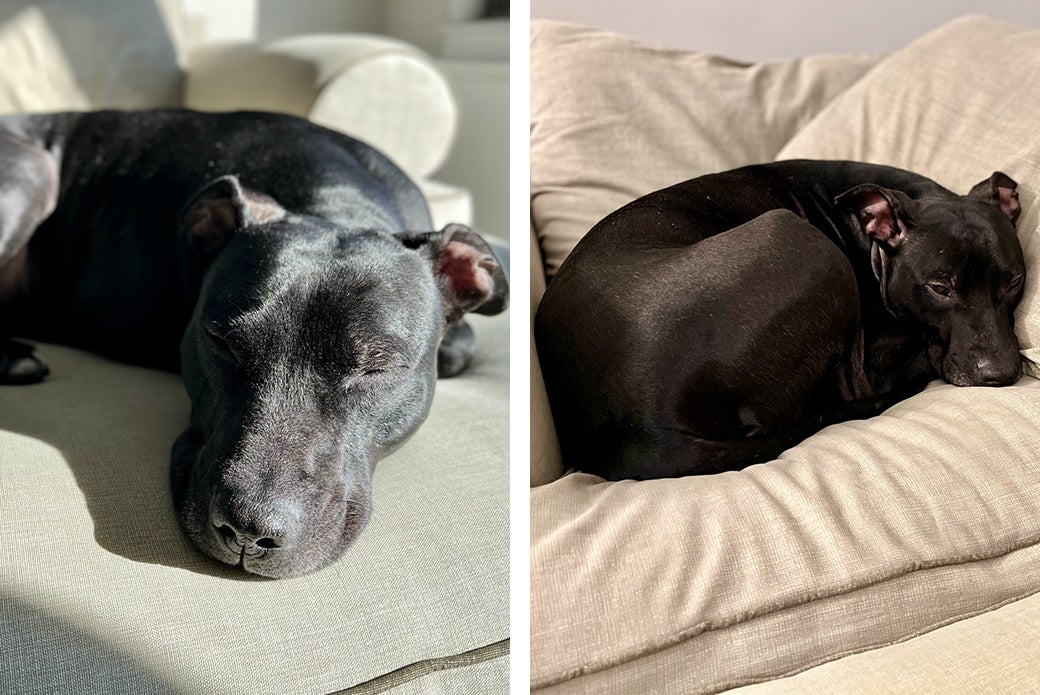
For the next few weeks, Canoo carried on being sweet and affectionate with Raymond, but never very playful, even with his toys or on his own. It wasn’t until about a month in his new digs that Canoo began showing his true colors.
“I’m seeing him wag his tail at home more often,” says Raymond. “Sometimes his tail will wag when I talk to him and try to initiate play. Another recently new thing he does is stand up on his hind legs for me to give him a hug. If not a hug, I’ll hold his paws and dance with him! He might even have a smiley face with his tongue hanging out.”

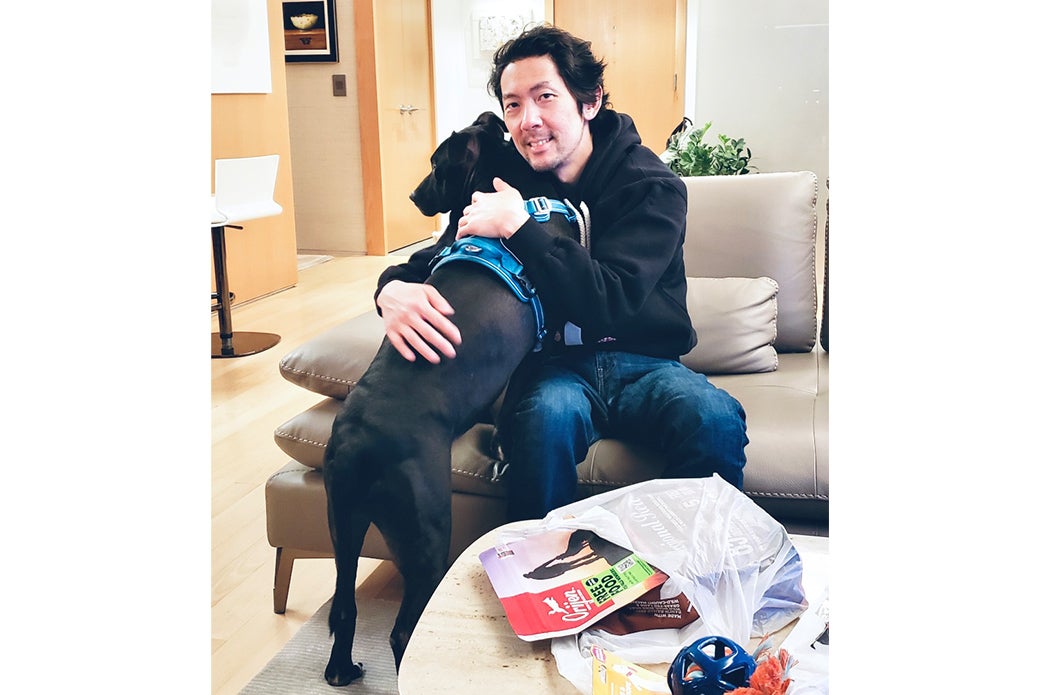
“To most dog owners, a wagging tail or smiley face with tongue out is something they see all the time and it’s no big deal. But with Canoo, it really IS a big deal to see this from him and it makes me very happy knowing he is continuing to make progress. He is gradually and steadily becoming more playful and cheekier every day.”
Unlike the fearful dog we first met, Canoo now loves playing at the dog park and has never met a person he doesn’t like.
“He is super friendly toward everyone and loves being petted by anyone who is willing,” Raymond tells us. “It’s no exaggeration when I say he really is the best dog I’ve ever known!”

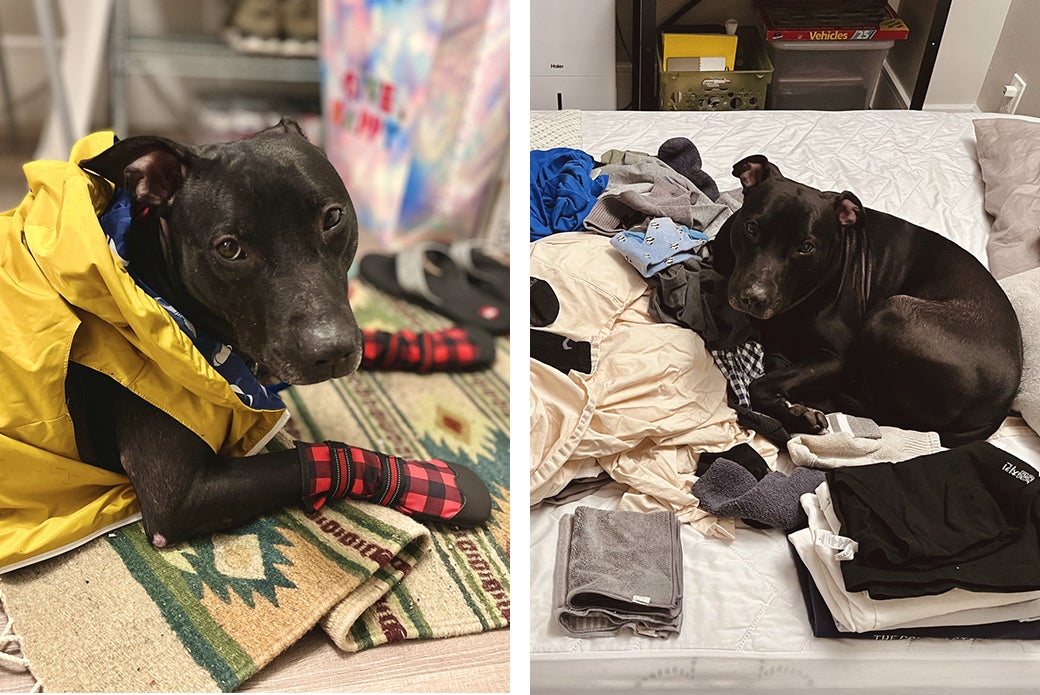
Seeing Canoo thrive as a companion animal has not only been huge for Raymond, but for all of the ASPCA staff that helped him along his journey to recovery.
“Knowing that Canoo is in a loving home is just so uplifting, it carries me throughout my day,” says Nikki. “I’m always amazed at the resilience that we see from dogs who are from suspected cruelty and dogfighting cases, but this was just above and beyond. It really makes me so happy and gives me so much hope for the future.”

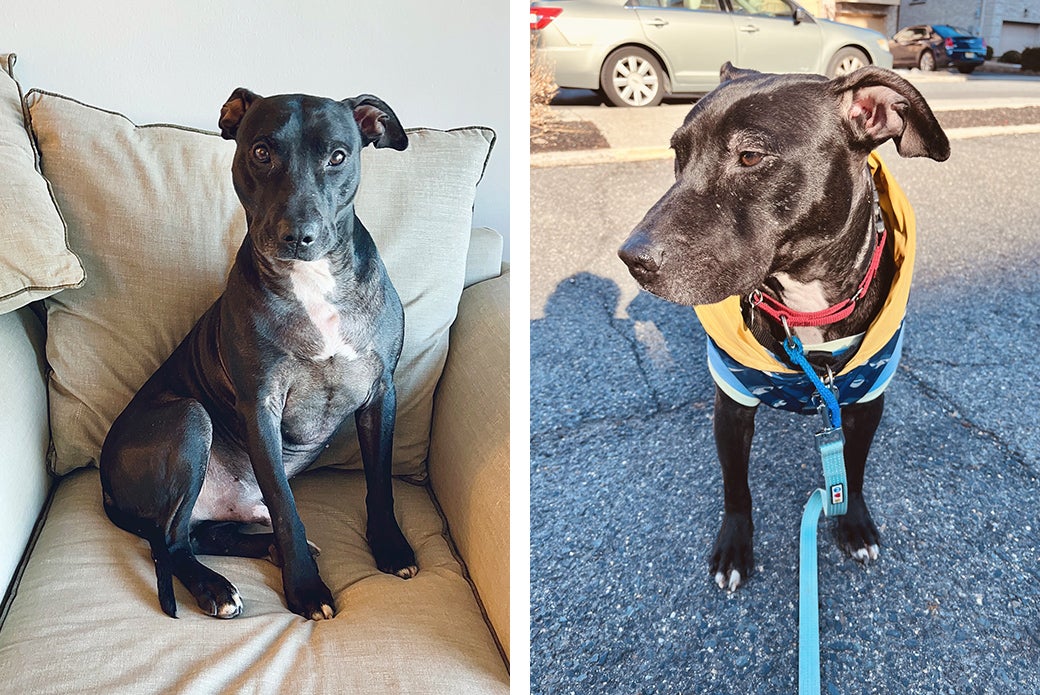
Of course, it does not go unnoticed by Raymond just how truly special his bond with Canoo is.
“Although I’m not religious, I can’t rule out the possibility that perhaps some things do happen for a reason. Maybe it was fate telling me he’s the dog for me at this moment in my life. In any case, I have no regrets and I couldn’t be happier to have Canoo in my life. All I want for him is to feel loved and live the rest of his life in peace and happiness as the gentle and sweet dog that he is.”

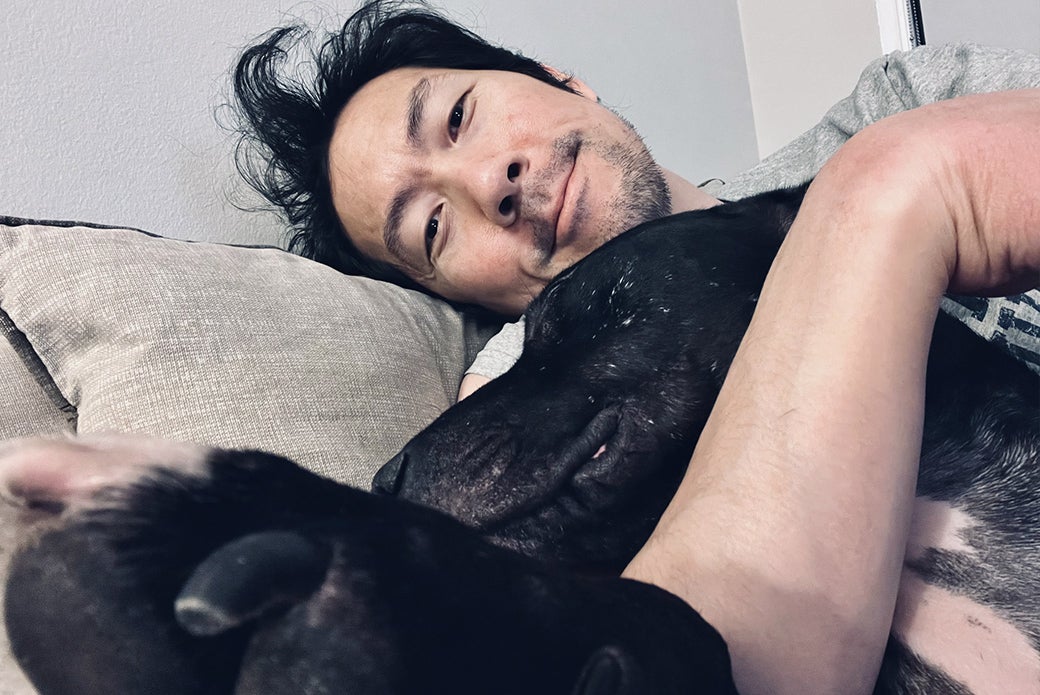
The ASPCA is committed to creating second chances for suspected dogfighting victims like Canoo. This National Dogfighting Awareness Day, we’re hoping you’ll advocate for dogs like him, too. Whether that’s opening your home to a former cruelty victim, adding your name in support of the HEART Act or simply sharing Canoo’s story on social media, your voice matters!
Source: Read Full Article